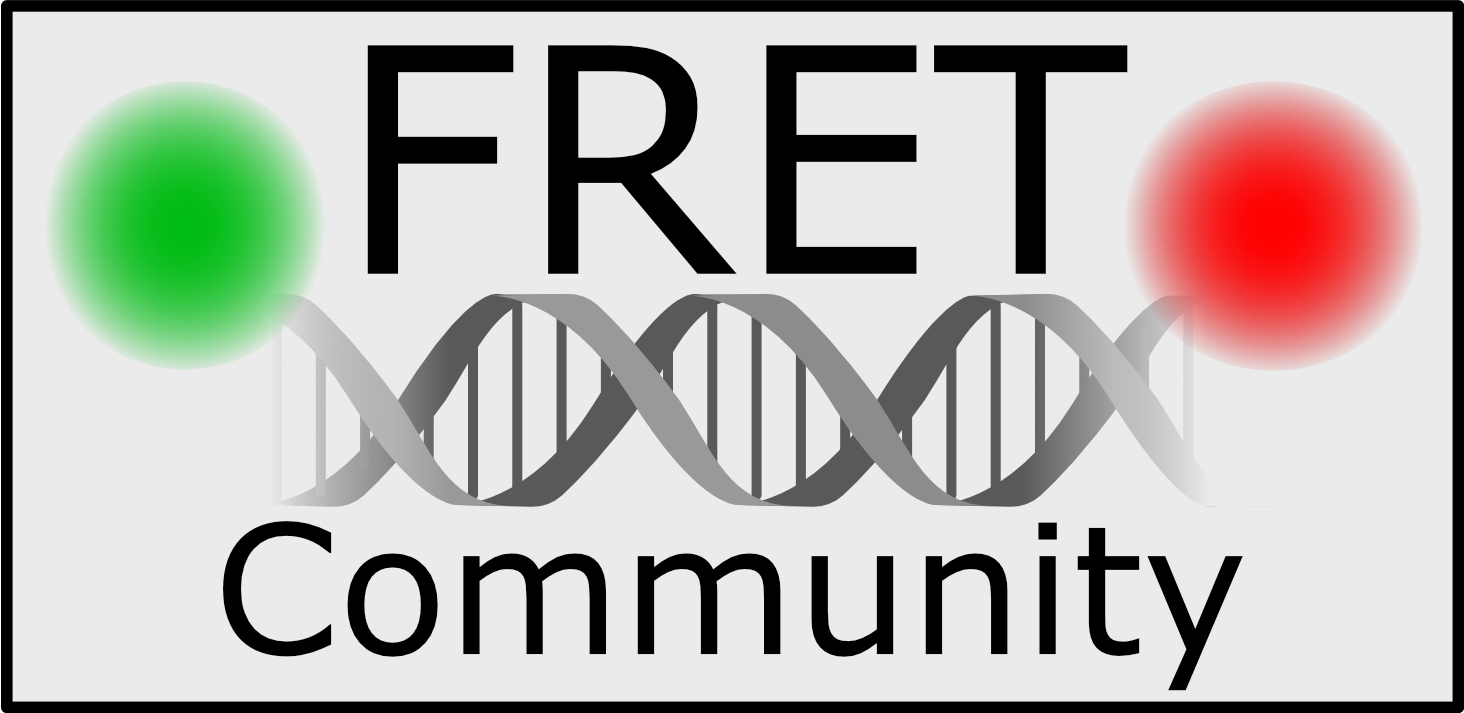Please find the draft for the FRET community bylaws below. The bylaws describe how the FRET community could be organized and our internal elections for the boards could be performed.
Please read and discuss the bylaws and provide comments, additions or changes in the comments box at the bottom of the page.
FRET Community Bylaws
A. Mission Statement
The FRET community serves as a hub for dissemination, joint community-driven experimental or computational challenges, community-driven development of analysis tools, sharing data and tools, establishing guidelines for documentation and validation of experiments, analysis and simulations, and advance the presence of FRET among the scientific community. Thus, the FRET community is an open and transparent organization of researchers for advancing the FRET field and for having a joint voice in the communication with other researchers, communities and societies.
While the starting point and scientific focus of this community is fluorescence spectroscopy and imaging using Förster resonance energy transfer, members of related fields that use fluorescence in the broader sense are always welcome.
B. FRET COMMUNITY
Article I (Membership)
Membership to the FRET community is obtained through registration to a mailing list. Registration requires the following information: name, affiliation, email, and position. Acceptance to the list requires that the provided information is correct
Article II (Member positions)
All members of the FRET are voting members for electing representatives for their corresponding career stages or positions.
Career stages and positions are defined as follows:
Early stage researchers in academia*: Any person considered to be in training, i.e. members of undergraduate, master’s, Ph.D. programs or postdoctoral trainees.
Young investigators in academia*: Researchers who are in a tenure track program but currently are non-tenured.
Industry, Instrument facility, editors and others: Members of the industry and facility directors, lab managers, editors or other members with non-tenure track positions in academia or industry.
Senior researchers in academia*: Academic researchers who are tenured and/or have research group leader position.
* Academia covers (based on examples from Germany and the USA, but not limited to) public or private universities, schools of applied sciences, colleges, etc., and private (St. Jude, Max- Planck-Society, etc.) or governmental research institutions (NIH, Helmholtz, Leibnitz etc.). In case of uncertainties, please contact us.
The contact information will be requested to be updated once a year, i.e. due to changes of the position.
C. FUNCTIONS
Article III (Organization of the FRET community)
Self-governance of the community will be performed by elected members of the community. The different panels should have an adequate representation of gender, geographic regions and research topics.
The following panels are suggested:
- Advisory Board
- Steering Committee
- Taskforces and workgroups (divided by topics)
Advisory Board: The advisory board will be responsible to plan, initiate, and coordinate activities of the FRET community for spectroscopy and imaging, including (but not limited to) disseminating efforts, scientific challenges, workshops and conferences.
The Advisory Board will be composed of representatives of the different career stages (to be discussed in an open forum) as:
- Early stage researcher in academia: 4 representatives
- Young investigator in academia; 2 representatives
- Industry, Instrument facilities, editors and others: 2 directly elected members
- Senior researcher in academia: 8 directly elected members
Early stage researchers and young investigators could additionally form committees within their groups. In case of non-adequate representation of gender, geographic regions or research topics after the election, the advisory board can express a limited number of invitations to reach an adequate balance. At least 2/3 majority in the Advisory Board is needed for this.
Steering committee: The steering committee is elected from the Advisory Board. The elected positions are chair, co-chair, treasure, and secretary. Their roles will be discussed by the first elected Advisory Board. The steering committee is advised to have an invited non-voting external advisor and non-member of the FRET community to serve as an external advisor.
Potential tasks of the steering committee are the representation of the FRET community, to accompany and support actions that are initiated on different levels and to fulfill the responsibility as a program manager.
Taskforces and workgroups:Taskforces and workgroups will coordinate specific efforts on scientific problems and community development. They may be established by the Advisory Board or initiated in a bottom-up process subject to agreement of the Advisory Board.
Article IV (Modifications of the bylaws)
Modifications of the bylaws will be established in an open discussion process and agreed upon through a vote of all members of the FRET community.
D. Starting the community
Article V (Elections)
Only members subscribed to the mailing list can vote for representatives of the Advisory Committee of the FRET community. Votes are only counted towards members of their corresponding position.
The list of candidates is established from self-nominations and nominations (subject to the agreement of the nominee). A form will be provided for the candidates to describe their plans and mission. The career status and the affiliation will be displayed for the voting.
Every voter may cast a number of votes equal to the number of representatives in their category, as listed in the table below. Less votes are also valid, in which case unused votes are forfeited. The maximum number of votes per candidate is limited to two.
Category Number of representatives in the scientific advisory board = maximum number of votes per member
Early stage researcher 4
Young investigator 2
Industry, Instrument facilities, editors & others 2
Senior investigator 8
In the case that multiple candidates have received an equal number of votes, a decision should be reached in personal discussions with members of their category. If no agreement is reached, the lot will decide.

Comments: 2
How are the elections executed? Via email?
Dear Wieb,
it is currently planned that the elections are performed using the fret.community website. Details will follow soon.